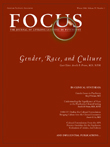Ask the Expert Cultural Awareness
I consult to a clinic that provides care for a large number of patients who are immigrants. I am not confident that I understand their cultural beliefs, values, and culture-rooted behavior, and I fear that I may overinterpret or underinterpret behaviors as psychopathology. I don’t have the time or inclination to study each patient’s culture in depth. How can I best approach this problem?
Response from Wen-Shing Tseng, M.D., and Jon Streltzer, M.D., Professors, Department of Psychiatry, University of Hawaii School of Medicine, Honolulu, Hawaii
By asking this question, you are already demonstrating an inclination for cultural sensitivity, which is one of the factors required for making culturally competent psychiatric assessments. Other factors include cultural knowledge, cultural empathy, and culturally relevant interactions.
Psychopathology can be defined as patterns of thoughts, feelings, or behaviors that cause significant unhappiness or discomfort within the individual or in interpersonal situations. It may coincide with atypical or unusual behavior, or it may not. Behaviors that are typical in one culture may be unusual in another; atypical behaviors may be acceptable in one culture but deviant in another. Thus, clinicians who work with patients of different cultural backgrounds need to have some knowledge of the cultural aspects of psychopathology that present in their daily work.
To determine whether a patient’s thoughts, feelings, or behaviors are part of a cultural norm or are psychopathological, it helps to be aware of how we approach the concepts of normality and pathology in our clinical work. As Offer and Sabshin (1) proposed, there are basically four approaches that clinicians use in assessing normality and pathology: professional definition, deviation from the mean, functional assessment, and social/cultural definition. Depending on the nature of the thoughts, feelings, or behaviors being assessed, one or more of these approaches may be more relevant and clinically useful than the others.
To assess normality and pathology by professional definition is a common approach in medical practice. This approach takes the view that normality and pathology can be differentiated clearly by the nature of the phenomenon itself and that professionals can make a judgment on it. For example, in medicine, fever or bleeding is clearly pathological irrespective of the patient’s cultural background and can be easily recognized by the medical professional. In psychiatry, many brain disorders, such as delirium and dementia, and psychotic symptoms, such as bizarre thoughts and perceptions and grossly disorganized behavior, are classified as pathological by professional definitions.
Some behaviors or characteristics are defined instead by deviation from the mean. We determine intelligence as normal or subnormal somewhat arbitrarily by cutoff scores on IQ tests. We judge whether alcohol intake is average or excessive. Psychological instruments can be used to measure the extent of psychopathology. When using this approach to diagnose psychopathology, however, clinicians must exercise caution because the mean or cutoff point may need adjustment from one culture to another. It is unlikely that a universal mean will apply.
Another approach is to assess the effect of thoughts, feelings, or behavior on function. Is the person functioning in a healthy or unhealthy manner as an individual and in relation to others in social interactions? The voluntarily induction of vomiting for weight loss to the point of endangering health is universally regarded as dysfunctional and thus as pathological. Some behaviors, however, vary greatly in the extent to which they are tolerated in different societies, making judgments about dysfunction relative ones. For example, outwardly aggressive behavior may be seen as intrusive or as acceptably assertive in different cultures. Likewise, quiet behavior may indicate that a person is withdrawn and seclusive or polite and respectful, depending on the cultural context and the behavior’s effect on family members.
As this discussion implies, an important way of distinguishing normality and pathology is by assessing the patient’s mental state in sociocultural context. This assessment depends on knowledge of the cultural attitudes of the members of the patient’s society. Having such knowledge is particularly crucial when interpersonal relations or social behavior are involved. For example, whether the individual’s behavior is judged as intimate or distant, harmonious or antagonistic, polite or rude, appropriate or inappropriate, or normal or eccentric depends on sociocultural norms, which can vary greatly from one culture to another.
From a clinical perspective, if you have relatively little knowledge about the patient’s social and cultural background, you can rely more or less on your professional judgment in matters involving biologically based organic or psychotic symptoms. However, when assessing interpersonal or social behavior, more caution is needed. Sometimes the patient can adequately convey and educate you about the cultural context. Access to collateral information from the patient’s family or associates can be very helpful in gaining cultural perspective, but clinicians must keep in mind that lay people may have misconceptions about psychopathology. If you remain unsure about the assessment, consultation with a cultural psychiatrist or one who has knowledge about the patient’s culture is recommended.
The need for cultural sensitivity is obvious when working with immigrants and minority groups. In a larger sense, however, cultural attention is needed for every patient, because each one will very likely differ in some way from the clinician—in socioeconomic background, education, age, gender, or other aspects. Thus, culturally competent assessment and care should be the standard for all patients.
Offer D, Sabshin M: Normality: Theoretical and Clinical Concepts of Mental Health, 2nd ed. New York, Basic Books, 1974Google Scholar



